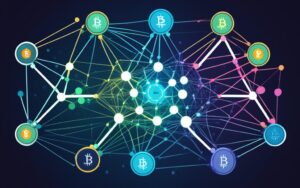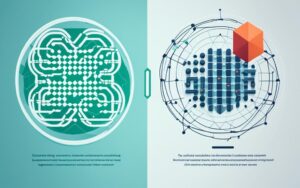Table of Contents
Blockchain technology has revolutionized digital transactions, but accessibility remains a challenge. Ronin, an EVM-compatible network, tackles this issue by offering a seamless gateway into the crypto ecosystem.
Built specifically for gaming, this platform processes millions of daily transactions with sub-cent fees. Its low-cost structure removes financial barriers, making digital assets more approachable for newcomers.
The network gained recognition through Axie Infinity, which served as an entry point for gamers worldwide. With 1.1M daily active wallets at its peak, Ronin proved its ability to handle mass adoption.
Its 2023 upgrade to DPoS consensus enhanced decentralization while maintaining speed. This balance between performance and security creates an ideal environment for first-time crypto users.
How Does Ronin Introduce People to Crypto?
For many, the first interaction with digital assets happens through play rather than traditional finance. Ronin leverages blockchain gaming to transform complex concepts into intuitive experiences. Its 3-second block times outperform Ethereum’s 13-second average, ensuring smooth transactions during gameplay.
Simplifying Blockchain for Gamers
The Ronin Wallet eliminates technical hurdles with single-click integration in titles like Axie Infinity. Players earn verifiable assets—from in-game items to SLP tokens—without managing private keys. This seamless user experience turns virtual achievements into tangible blockchain proofs.
“Gaming microtransactions now serve as onboarding points for decentralized ownership,”
explains a developer. The network’s 200+ TPS capacity supports mass adoption, converting casual players into crypto participants.
Lowering Barriers with Near-Zero Fees
At $0.003 per transaction, Ronin’s fees are a fraction of Ethereum’s $5+ gas costs. Katana DEX further reduces friction with 0.25% liquidity pool charges. Such affordability makes games viable economic platforms, not just entertainment.
By embedding crypto into familiar activities, Ronin’s ecosystem demystifies digital ownership. From NFTs to play-to-earn models, it bridges the gap between virtual worlds and real-world value.
Ronin’s Focus on Blockchain Gaming
Gaming has become the unexpected bridge between traditional users and blockchain technology. The network processed 560% more transactions than Ethereum during its November 2021 peak, proving gaming’s power to drive adoption.
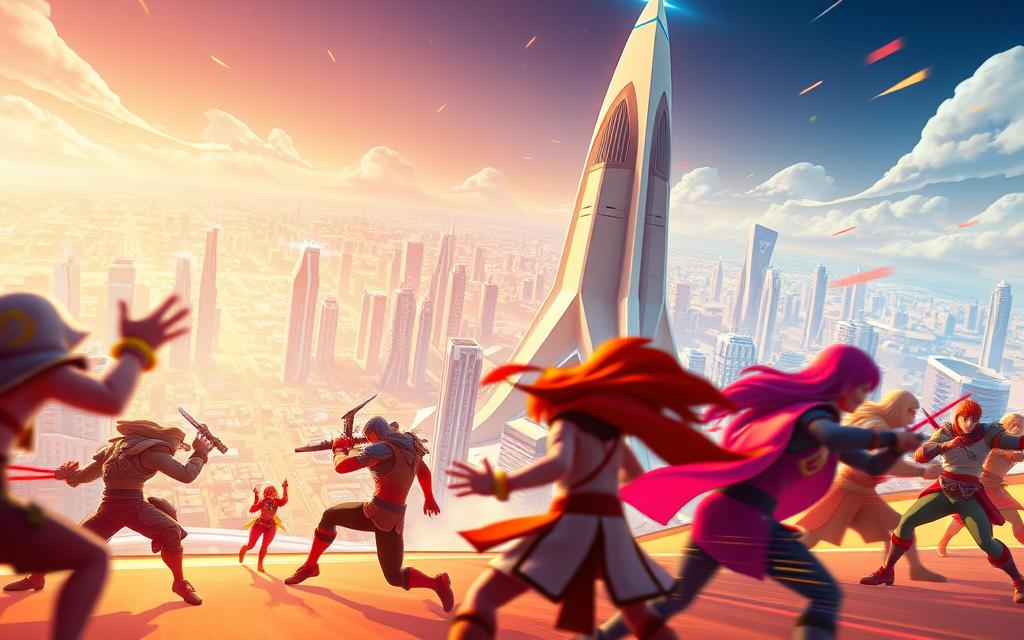
Axie Infinity: The Gateway to Ronin
With 2.8M daily active users at its height, Axie Infinity became the flagship title for this ecosystem. Players collected and traded digital pets as NFTs, earning SLP tokens through gameplay. This created tangible value from virtual activities.
“We saw farmers in the Philippines earning three times the minimum wage through Axie,”
notes a Sky Mavis developer. The game’s success demonstrated how games could onboard millions to blockchain concepts without technical jargon.
Expanding Beyond Axie: New Games on Ronin
Seven new titles joined the platform through $50K grants in September 2024. Pixel Heroes Adventure offers retro-style quests with NFT loot, while Kuroro Beasts combines monster battling with DeFi elements.
The RON token fuels growth, rewarding developers who build on the network. Machines Arena showcases this with PvP battles using Ronin-based NFTs. Bali Games targets emerging markets through mobile-first designs.
With 42.6M AXS tokens staked and plans for 100+ games by 2025, Ronin’s gaming ecosystem keeps evolving. Tribes Studio’s cross-chain assets hint at even broader interoperability ahead.
Key Features That Make Ronin User-Friendly
Speed and simplicity define Ronin’s approach to blockchain adoption. The network combines performance with intuitive tools, lowering entry barriers for new users.
Near-Instant Transactions
With 3-second block finality, Ronin outperforms Ethereum’s 13-second average. This speed enables sub-5-second NFT trades on platforms like Axie Marketplace.
Transactions cost just $0.01, a fraction of Ethereum’s $1.50+ gas fees. Such efficiency makes microtransactions viable, enhancing the user experience.
Seamless Wallet Integration
The non-custodial Ronin wallet supports fiat onboarding via Ramp. Biometric authentication adds security without complexity.
One-click bridging from exchanges like Binance simplifies asset transfers. Over 20K daily active addresses in 2023 prove its adoption.
Auto-conversion turns in-game items into NFTs, blending gaming with blockchain ownership. Future multi-chain support will expand interoperability by 2025.
The Ronin Ecosystem: More Than Just Gaming
Beyond gaming, Ronin’s ecosystem unlocks financial opportunities through digital assets and decentralized finance. With $1.3B+ in NFT trading volume, the network proves blockchain utility extends far beyond play-to-earn models.
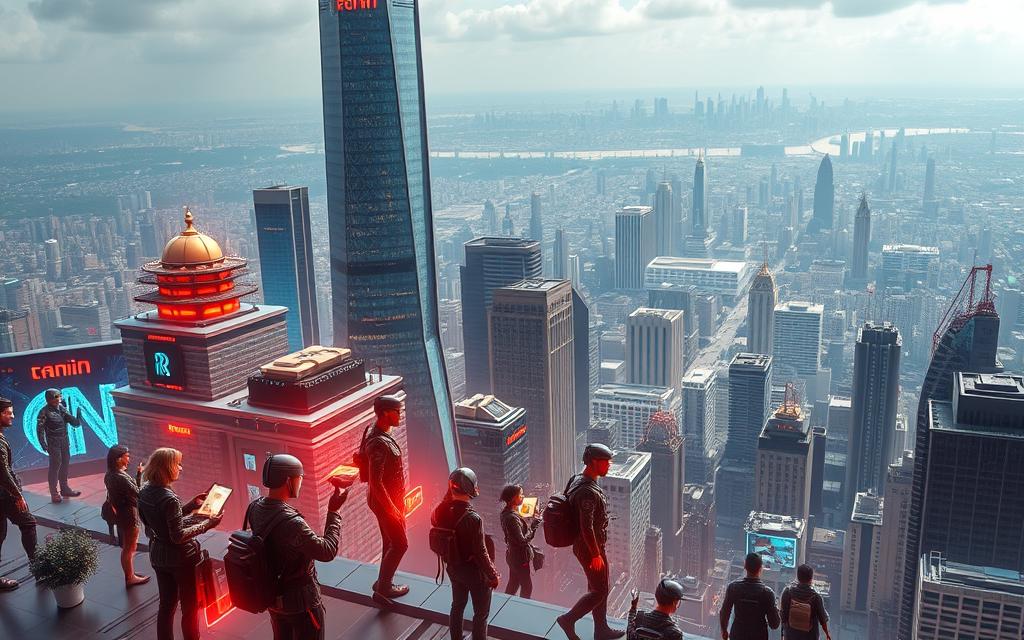
NFTs and Digital Assets
Ronin enables fractional NFT ownership, letting users invest in high-value assets like Axie Infinity lands. Cross-game interoperability standards allow tokens and items to move seamlessly between titles.
Pixel Heroes Adventure showcases this with NFT loot usable in multiple RPGs. “Fractionalization democratizes access,” notes a Sky Mavis developer. “Players can own a slice of rare assets without full purchase.”
DeFi Opportunities with Katana DEX
Katana DEX fuels Ronin’s DeFi growth, offering 43% APR for AXS staking. The RON/WETH pool provides additional rewards, attracting $22M in liquidity by Q3 2024.
“Yield farming on Katana mirrors traditional finance—but with blockchain’s transparency,”
Upcoming lending protocols will let users collateralize in-game NFTs. With 7.7M RON required for validator status, governance participation is incentivized, blending gaming with financial empowerment.
Decentralization and Security on Ronin
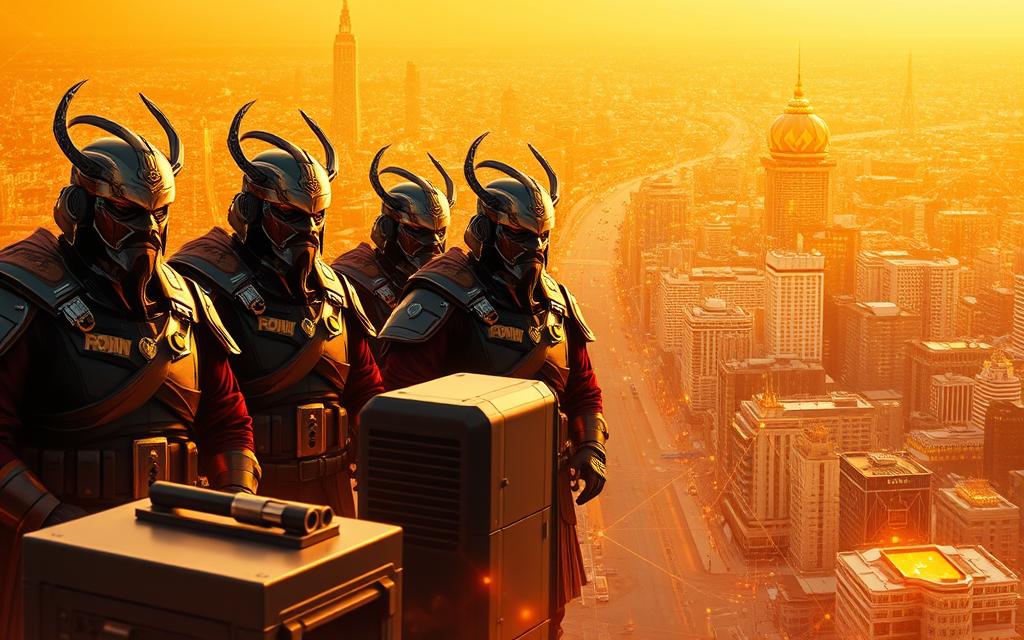
Ronin’s shift to DPoS marked a pivotal moment for community governance. The network transitioned from a 9-validator Proof-of-Authority (PoA) model to a 22-node Delegated Proof-of-Stake (DPoS) system in 2023. This upgrade enhanced security while distributing control across more participants.
From PoA to DPoS: Evolving Consensus
The new consensus mechanism reduces reliance on centralized validators. Unlike PoA, where only approved entities could validate transactions, DPoS lets RON token holders vote for delegates. Google Cloud and Animoca Brands now operate nodes alongside community-elected validators.
A 250K RON minimum stake ensures validators have skin in the game. Anti-sybil measures prevent single entities from dominating—each validator’s voting power is capped at 1/22 of the total stake. Ronin’s governance model plans to expand to 100+ validators by 2026, further boosting decentralization.
Validator Participation and Community Governance
Validators face slashing penalties for downtime or malicious acts, protecting network integrity. The $1M Immunefi bug bounty program adds another layer of security, incentivizing ethical hacking.
“REP-0010 introduced rotating validators to prevent stagnation,”
explains a Sky Mavis developer. Proposals like this empower token holders to shape the ecosystem. With 8.1M RON staked per validator on average, the system balances participation rewards with staking accessibility.
Scalability: Handling Millions of Transactions
The true test of any blockchain comes during periods of extreme demand. Ronin’s network processed 7.5M daily transactions at peak capacity—equivalent to Visa’s average throughput. Stress tests simulating 10M users confirmed horizontal scaling through experimental sharding.

Peak Performance Under Demand
REP-0003 reduced transaction finality from 45 seconds to just 6 seconds during congestion. Blob storage technology batches thousands of microtransactions into single operations. This breakthrough maintains sub-cent fees even when activity spikes 560% above baseline.
Validator hardware requirements ensure consistent performance:
- 64GB RAM nodes process 200+ TPS
- SSD storage handles 1.4GB daily blockchain growth
- Multi-threaded execution enables parallel processing
Future-Proofing with ZK Rollups
Current prototypes achieve 1M+ TPS using zero-knowledge proofs. Cross-rollup communication lets assets move between gaming and DeFi applications seamlessly.
“Our hybrid PoS/ZK-Rollup model combines security with infinite scalability,”
explains a Sky Mavis architect.
The roadmap prioritizes modular over monolithic scaling:
- 2024: Validator-operated zkEVM testnets
- 2025: Snark-based compression for NFT metadata
- 2026: Multi-chain settlement layer
This phased approach gives developers time to adapt while ensuring backward compatibility. The network‘s evolution demonstrates how blockchain solutions can grow with user demand.
Security Measures Protecting Ronin Users
Robust security protocols form the backbone of Ronin’s blockchain infrastructure. The network employs a triple-layer testing system—devnet, Saigon testnet, then mainnet—before deploying upgrades. This staged approach caught 83% of critical bugs during 2023’s DPoS migration.
Bug Bounties and Audits
White hat collaborations recovered $40M+ in vulnerable assets last year. Partnerships with CertiK and Halborn conducted 360-degree audits:
- Static analysis of 2.1M lines of code
- Penetration testing simulating 17 attack vectors
- Economic stress tests for transactions under congestion
The team implements wallet whitelisting, freezing suspicious addresses within 90 seconds. Multi-signature authorization guards bridge operations, requiring 5/9 approvals for asset transfers.
Shadow Forks for Safer Upgrades
Three shadow forks replicated mainnet conditions before the consensus change. These parallel chains tested:
- Validator rotation under load
- State synchronization across 22 nodes
- Emergency rollback procedures
“Cold storage strategies protect 98% of treasury assets offline,”
notes a security architect. AI monitors for anomalies, flagging irregular patterns in real-time. Post-2022 breach protocols now mandate weekly key rotations and hardware security module upgrades.
These measures fortify Ronin’s ecosystem while maintaining accessibility. Validators undergo quarterly security certifications, ensuring the network’s defensive layers evolve with emerging threats.
Conclusion
Web2 users discover blockchain through intuitive gameplay rather than complex interfaces. Ronin’s user experience turns gaming into a gateway for digital ownership, with sub-cent transactions removing financial barriers.
The ecosystem now extends beyond Axie Infinity, with DeFi integrations and NFT interoperability. Sponsored gas fees, launching in 2024, will further simplify onboarding.
RON token holders shape governance, while zkEVM upgrades promise scalable crypto solutions. Developers can build on this evolving platform, where play and finance converge seamlessly.
FAQ
What makes Ronin different from other blockchain networks?
Ronin is built specifically for gaming, offering near-zero gas fees, fast transactions, and seamless wallet integration. Unlike general-purpose blockchains, it optimizes for player experience while maintaining decentralization.
How does Ronin reduce fees for users?
By using a Proof-of-Authority (PoA) consensus mechanism, Ronin minimizes computational costs. This allows transactions to cost fractions of a cent compared to Ethereum’s high gas fees.
Can I use Ronin for non-gaming purposes like DeFi?
Yes. While gaming is the focus, Ronin supports DeFi through Katana DEX, where users swap tokens, stake assets, and earn rewards in the ecosystem.
Is Ronin secure after transitioning to Delegated Proof-of-Stake (DPoS)?
Absolutely. DPoS enhances decentralization by letting token holders elect validators. Combined with audits and bug bounties, security remains a top priority.
How fast are transactions on Ronin?
Transactions settle in seconds, even during peak demand. The network handles millions daily without congestion, thanks to its gaming-first scaling solutions.
What games are available on Ronin besides Axie Infinity?
The ecosystem is expanding with titles like Pixels, Apeiron, and The Machines Arena. Developers choose Ronin for its low-cost, high-speed infrastructure.
Do I need crypto experience to use Ronin?
No. Sky Mavis designed Ronin for accessibility. Features like one-click wallet creation and in-game asset management simplify onboarding for beginners.
How can I participate in Ronin’s governance?
Hold RON tokens to vote on proposals or delegate stakes to validators. Community input shapes upgrades, ensuring alignment with user needs.
What’s the role of the Ronin Bridge?
It securely connects Ronin to Ethereum, letting users transfer assets like AXS and SLP between chains. Future ZK-rollups will improve efficiency.
Are NFTs on Ronin interoperable with other blockchains?
Currently, NFTs reside on Ronin but can be bridged to Ethereum. Cross-chain compatibility is a focus for future development.




